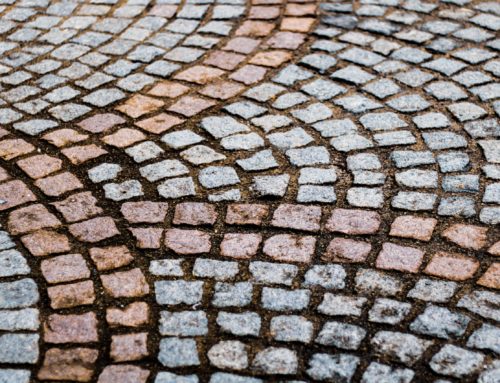Weird that the word “stainless” is in the name! Stainless steel is a popular choice in kitchen appliances, counters, sinks, and other household fixtures because of its longevity and luster. But beauty can quickly lose its appeal under greasy fingerprints, streaks, smudges, dirt, spills, and stains. Using the wrong cleaning tools and techniques can make the mess worse, even to the point of harm or damage to stainless. Frugal housekeepers who prefer natural and do-it-yourself cleaning options will love this affordable, chemical-free, highly effective recipe to clean stainless steel. Best yet, it effectively cleans stainless steel all around the house.
Know Your Finish
Non-coated
The more common stainless steel finishes are matte finish, brushed finish, and mirror finish. These refer to the process used to complete the product, not a “finish” or coating sprayed on or added to the stainless steel surface in the fabricating process.
Stainless steel finished by any of the above methods is non-reactive to acids. Therefore, a vinegar-based homemade stainless steel cleaner won’t damage your stainless steel. 6% or higher acidity in cleaning vinegar is best suited to cutting grease and grime (plain white vinegar has 5%).
Coated
The oleophobic (oil-resistant) coating added to the surface of appliances to make them fingerprint-resistant is easily damaged if you are not aware of how to care for it. The layer can be stripped away by any vinegar solution. Therefore, check your owner’s manual to ensure that your appliances do not have an upgraded finish before proceeding with any vinegar-based cleaning solution.
DIY Stainless Steel Cleaner
You’ll need:
- cleaning vinegar (6% or greater)
- essential oil, (optional)
- food-grade mineral oil
- 16-oz. spray bottle
Instructions:
- Fill the spray bottle with cleaning vinegar. Check your owner’s manual to ensure that appliances and fixtures don’t have an oleophobic (oil-repellent) coating, which can be stripped by cleaning it with vinegar.
- Add 10 to 20 drops of essential oil, such as lemon, to counteract the pungent smell of vinegar. Lemon oil is safe to use on tough metal.
- Secure the spray head to the bottle, and shake to combine.
- Pour about 2 oz of food-grade mineral oil into a small bowl. While some use olive oil as a reasonable substitute, know that it can become rancid with prolonged exposure to sunlight.
To use:
- It is crucial to determine the grain or pattern of lines in the stainless steel—either vertical or horizontal. The shinier the finish, the more difficult this may be to detect, so look very closely. You want to avoid cleaning against the grain because that will leave annoying streaks.
- Spray the vinegar solution in one hand, and wipe with a microfiber cloth in the other. Clean as vigorously as necessary to remove all dust, dirt, and grime. Caution: Do not use abrasive scrubbers like a green ScothBrite sponge, steel wool, or any other even mildly abrasive implement. Those will surely scratch your beautiful stainless.
- Repeat the process of spraying and wiping to clean the entire appliance.
- Once clean, dip a clean, soft cloth into the mineral oil and gently rub in the direction of the grain to erase any streaks or remaining prints. Make a second pass over the oiled areas with a clean, soft cloth to remove excess oil and boost the shine. Polish your stainless steel to perfection by repeating these steps.
- To store: Label the bottle and keep it at room temperature away from kids and pets.
Contact Us
While you may love this love this affordable, chemical-free, highly effective recipe to clean stainless steel, sometimes we can busy to do it ourselves! Therefore, are you looking for someone to provide a deep cleaning of your kitchen? Give us a call today for a FREE estimate! Whether at work in your Tampa Bay office or your Clearwater home, we are here to help south Florida Floridians keep their homes and offices in top-notch shape!






